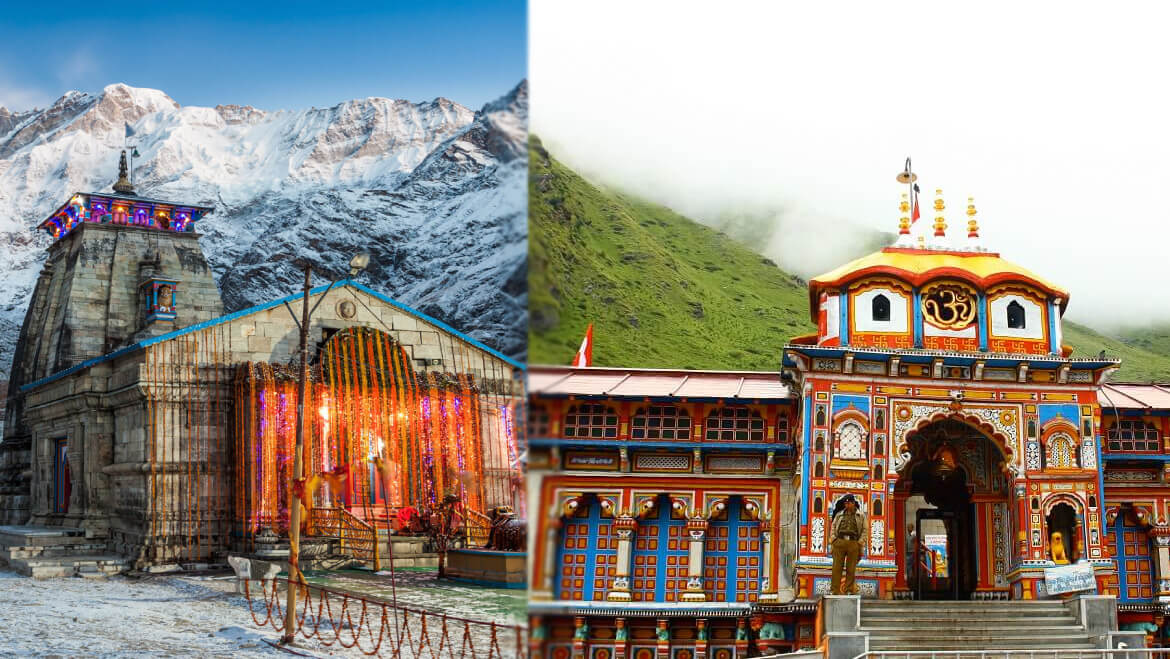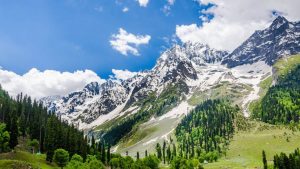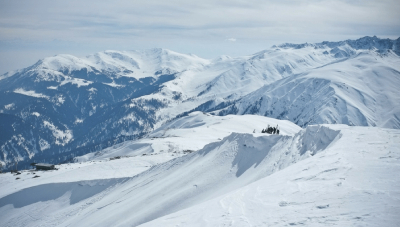Coined by the great Hindu philosopher Shri Adi Shankaracharya, ‘Char Dham’ represents the four sacred abodes of Hindu deities – Badrinath, Kedarnath, Gangotri and Yamunotri. Situated in different districts of Uttarakhand, these four shrines bless the state with their mighty presence. Because of their significant value to Hindu mythology, a trip to these four sacred destinations of India is considered as a way to Moksha. Apart from serving as great salvation points, these shrines also fill your memories with dazzling images of the breathtaking beauty of the Garhwal Himalayan Range of the state.
Staring from Yamunotri, the expedition leads to Gangotri and then moves further to Kedarnath and ending at Badrinath – the last salvation point of Chardham Yatra. This holy pilgrimage Yatra is taken by millions of devotees from all over the world every year. Some people though take only the Do Dham Yatra, i.e. Badrinath – Kedarnath Yatra or Gangotri – Yamunotri tour.
Dedicating the write up to those who wants to go on a trip to Badrinath and Kedarnath Dhams, we focus not only on the certitude of belief linked with these two holy places but also highlight the many beautiful aspects that rest on their contested terrains.
Recommended Tour Packages
Kedarnath – Pristine Abode of Lord Shiva amid the Unparallel Beauty of Himalaya
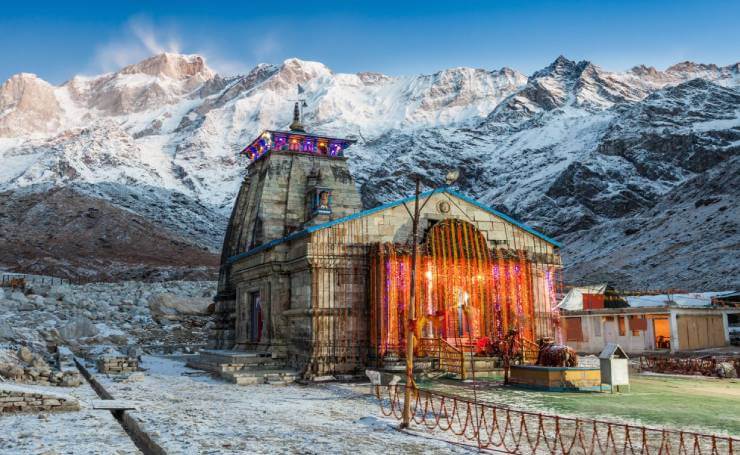
It doesn’t matter whether you are a pilgrim or not, a tour to Kedarnath is always exciting and fascinating for people of all age groups. It sits pretty at a height of 3,900 meters above sea level and overlooks the lush green valleys of Garhwal Himalayan Range. The way to Kedarnath, a small town, is ruled by Mother Goddess in her full bloom. Grabbing attention because of the famous Kedarnath Temple, the town is located on the shores of River Mandakini.
There are two ways to reach this holy place, one by trekking a grueling 14 km stretch from Gaurikund and the other through helicopter. Despite the harshness, most of the visitors choose trekking down the 14 km route full of beautiful diorama.
The trip to Kedarnath starts from Rishikesh from where travelers can use motor vehicles to reach Rudraprayag, the meeting place of rivers Alaknanda and Mandakini. From here onwards the path to Kedarnath and Badrinath separates, the left one heading towards Kedarnath and the right towards Badrinath. The en route memories to Kedarnath are full of scenic beauty and breathtaking views of Garhwal Himalayan Range of Uttarakhand.
Also Read: 12 Jyotirlingas of Lord Shiva in India and Their Mythological Importance in Hindu Religion
The way to Kedarnath temple from Gaurikund is an uphill 14 km route full of picturesque vistas, white waterfalls and snow-covered peaks. Though the entire journey may leave several among the visitors exhaust and tired but the zeal of seeking Lord Shiva’s blessings will not let them give up. And accompanying travelers in this grueling trek is Mandakini River that gives an amazing slivery look running amidst the green meadows.
- Deities from Kedarnath Temple are worshipped at Ukhimath during winters
- Phata is the place from where helicopter rides are available for Kedarnath.
The Expedition Route: Rishikesh – Devprayag – Rudraprayag – Agastmuni – Kund – Guptkashi – Phata – Sonprayag – Gaurikund – Kedarnath.
About Kedarnath Temple
Nestled on a plateau encircled by high snow-covered peaks and glaciers, Kedarnath Temple is one of the holiest religious sites in India dedicated to the deity Shiva as “Lord of Kedar Khand”. Built in stone featuring an impressive architectural style, the temple dates back to the 8th century and is placed at an elevation of 3,583 meters.
Because of the surrounding weather conditions, the temple opens only for a certain period, from May – October (from Akshaya Tritriya to Kartik Purnima) in a year. The shrine of Kedarnath is one of the 12 Jyotirlinga temples situated all over the country. With Kedar Dome Peak in the background creating magical vistas that soothes the eyes, the sight of the temple with the surrounding beauty is simply enthralling.
Other Interesting Blog to Read
On Way to Badrinath – Another Spiritual Journey Full of Beauty and Scenes
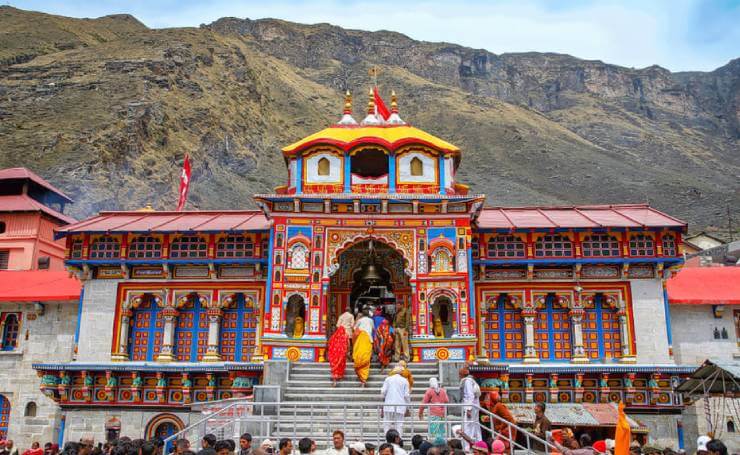
It needs not mention as to what makes Badrinath the last stopover of Char Dham pilgrimage expedition. The largest among the four pillars of the Yatra and awarded with unparalleled natural beauty of Garhwal Himalayan Range, a visit to Badrinath is so mesmerizing that it makes you long for a visit again and again.
The sheer thought of Badrinath can bring glimpses of quintessential and picturesque beauty of nature in mind and fills the heart with peace and content. This quaint destination is something that any traveler, especially nature lover, adventurer and Hindu follower would never want to give a miss.
Start your Holy pilgrimage Yatra of Badrinath from Guptkashi after paying homage to Kedarnath Temple. The first major resting place on the way is Ukhimath located at a height of 1,311 meters above sea level. It is the central location for those who want to go further to Madhmaheshwar, Tungnath and Deoria Tal. The next one is Chopta, full of nature’s bounty, after 30 km. The trekking route to Tungnath starts here. Chamoli is the meeting place of the second route to Badrinath via Rudraprayag while Pipalkoti is full of several good hotels and restaurants.
A major stopover of Badrinath Temple journey is Joshimath, at a distance of 35 km from Pipalkoti. Lord Badrinath is worshipped here during winters. The place is also known for its Durga and Narsingh temples.
- Auli, one of the best skiing destinations in India is located around 15 km away from Joshimath.
- Govindghat, about 20 km from Joshimath via Vishnuprayag, is considered as the base camp for trekking to Hemkund Sahib and Valley of Flowers.
The Expedition Route: Guptkashi – Ukhimath – Chopta – Gopeshwar – Chamoli – Pipalkoti – Joshimath –Vishnuprayag – Govindghat – Pandukeshar – Hanumanchatti – Badrinath
About Shri Badrinath Temple
Also known as Badrinarayan Temple, Badrinath Temple is dedicated to the Badrinarayan form of Lord Vishnu. Nestled on the shores of Alaknanda River, the temple and the surrounding hilly town of the same name radiates an aura of positive spiritual energy amidst the breathtaking views of the snow-capped mountains.
Surrounded by Nar and Narayan mountains from both the sides, and the majestic Neelkanth peak in the backdrop, the temple resembles a Buddhist temple as per the construction style. The temple is divided into three main parts – the sanctum (Garbhagriha), convention hall and Darshan hall. The holy shrine of Badrinath is one among the 108 holy places for Vaishnavites and is opened only for six months (end of April to beginning of November) every year.
Along with the main shrine of Badrinath, visitors can also seek blessings of Goddess Mahalakshmi placed in a separate chamber in the parikrama area of the complex. There is a Tapt Kund (hot water spring) too located on the shores of Alaknanda River where pilgrims take a holy bath before visiting the temple. This strange natural blend of hot water in chilly conditions amazes every visitor. Located behind Badrinath Temple is another shrine, the Lakshmi Narsingh Mandir.
Other Interesting Blogs to Read
Like & Follow our social media accounts at Twitter, Facebook, Linkedin & Instagram for getting the latest updates & offers on holiday packages.
Disclaimer: We do not take credit for some of the licenced paid images used in our blogs, whether from Google Images, Fotolia & Shutterstock. All such images are the copyrights of their respective owners and we try to provide credit for them wherever we can. If, however, any copyright image has been used on our blog, the concerned person can either mail us directly to remove the image or provide credit to whomsoever the image may belong to.
About the author
As a tour manager at TourMyIndia.com, Anil Rana has helped his clients in exploring the Indian wildlife and cultural heritage. His love for travel has imparted him immense knowledge of Indian wildlife, cultural heritage, leisure destinations. To help travellers all across the world, he loves to pen down his experiences and wisdom about cultural, wildlife and leisure travel in India.

 +91-9212777225
+91-9212777225 Plan Your trip
Plan Your trip